Selecting and installing an isolated safety barrier (also known as an intrinsically safe barrier) is crucial in hazardous environments to ensure both personnel safety and reliable system operation. These devices are widely used in industries such as oil and gas, petrochemicals, and other sectors where flammable gases, vapors, or dusts are present. To achieve optimal performance and safety, careful consideration must be given to the selection process and installation procedure of these barriers. Below is a comprehensive guide detailing the steps for properly selecting and installing an isolated safety barrier.
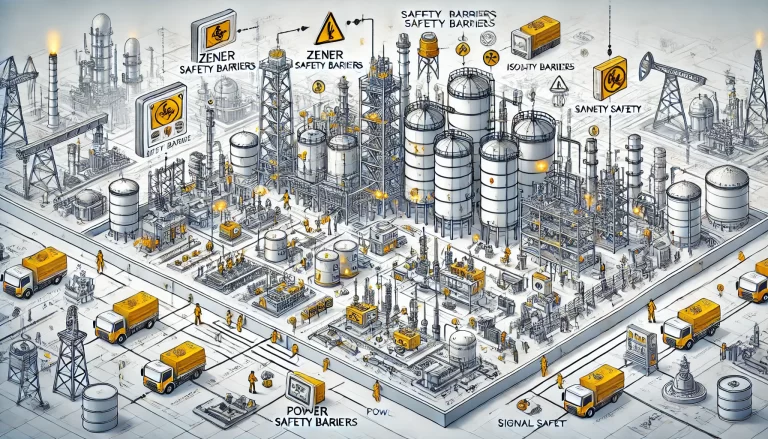
1. Determine the Application Environment
The first step in selecting an isolated safety barrier is identifying the environment where it will be used. This includes understanding the potential hazards and explosion risk in the specific location:
- Hazardous Area Classification: Determine the classification of the hazardous area, which could range from Class I, Division 1 or Zone 0 (where explosive atmospheres are continuously present) to Class II, Division 2 or Zone 2 (where explosive atmospheres are present only occasionally).
- Compliance with Standards: Ensure that the safety barrier complies with relevant international or national safety standards such as ATEX (EU directive for explosive atmospheres), IECEx (International Electrotechnical Commission system for certification to standards relating to equipment for use in explosive atmospheres), or the NEC (National Electrical Code) in the U.S.
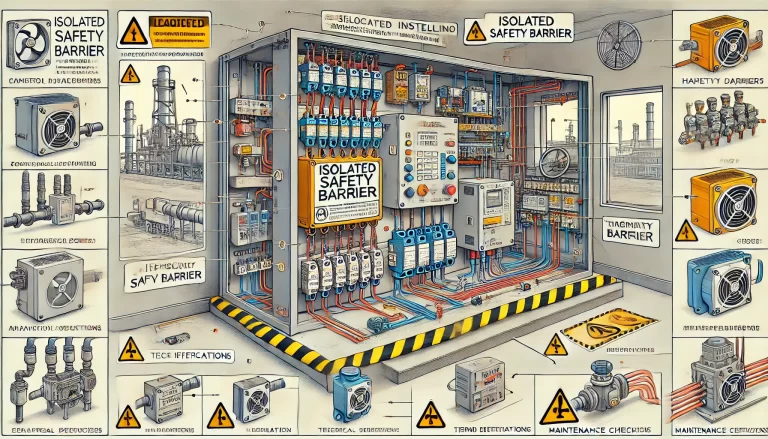
2. Choose the Right Type of Safety Barrier
Safety barriers come in various types, each designed to handle different types of electrical signals and power levels. The following points help to identify the appropriate type:
- Active vs. Passive Barriers: Active barriers are powered and provide additional functions like signal conditioning, while passive barriers rely solely on the input signals and do not require an external power supply. Choose based on whether you need signal amplification or conditioning.
- Signal Type: Determine whether the safety barrier is designed to support the specific type of signal being transmitted. This could include:
- Analog Signals (e.g., 4-20 mA current loop signals used in process control systems),
- Digital Signals (e.g., pulse, frequency, or other types of digital communications),
- Switching Signals (used to indicate open/closed states from field devices like switches, valves, or relays).
Matching the barrier to the appropriate signal type is essential for proper functioning and signal integrity.
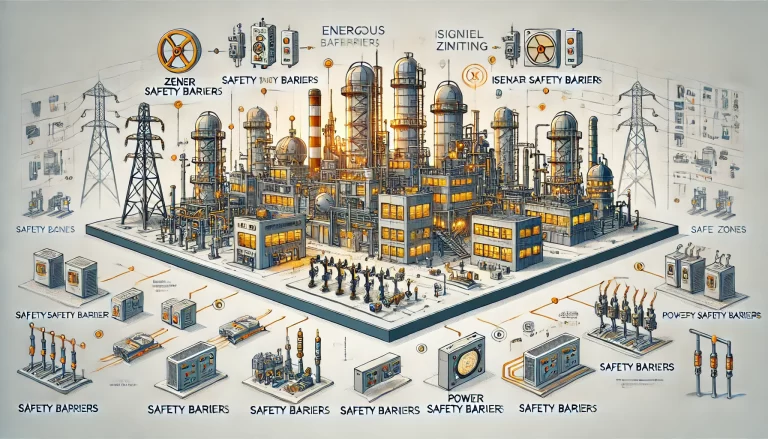
3. Review Technical Specifications
Several key technical parameters should be carefully considered when selecting an isolated safety barrier:
- Isolation and Signal Transmission: A core function of the isolated safety barrier is to provide electrical isolation between the hazardous and safe zones. This isolation protects against ground loops and signal interference. Look for barriers with high isolation ratings that meet the requirements of your application.
- Transmission Accuracy: Some safety-critical applications require precise signal transmission without distortion. Ensure the safety barrier’s transmission accuracy aligns with your system’s tolerances, particularly in applications like process automation where even small deviations can have significant consequences.
- Response Time: If the application involves fast-changing signals or safety-critical monitoring, the response time of the safety barrier is important. Ensure the device has a response time suitable for your system’s requirements to avoid delays in signal transmission.
- Load and Power Handling Capacity: Make sure the barrier can handle the current and voltage levels of your instrumentation and field devices. The barrier’s power dissipation limits should be aligned with the load conditions of your system.
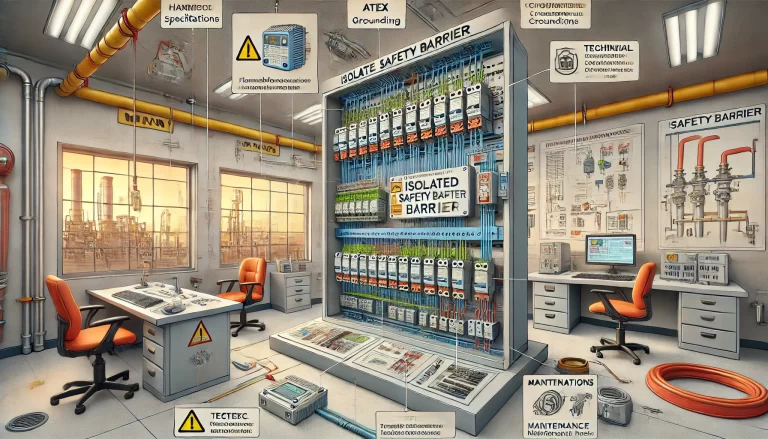
4. Location and Environmental Considerations
Once the appropriate type of safety barrier is selected, it is critical to plan for its placement and ensure it can withstand the environmental conditions:
- Mounting Location: Typically, safety barriers are mounted in safe areas (control rooms, junction boxes) rather than directly in hazardous zones. Choose a location that is easily accessible for maintenance, but also well-protected from potential environmental stressors.
- Environmental Protection: Check the Ingress Protection (IP) rating of the safety barrier to ensure it can resist dust, water, and other environmental factors, particularly if installed in areas exposed to extreme conditions. For corrosive environments, ensure the materials and housing of the barrier are resistant to chemical corrosion.
- Thermal Management: Isolated safety barriers may generate heat during operation, especially in systems handling large loads. Ensure proper spacing and ventilation are provided in the installation setup to prevent overheating.
5. Verify Certifications and Compliance
It is essential to select safety barriers that are certified for use in hazardous locations according to relevant standards. Always verify the product has the necessary certifications, such as:
- ATEX Certification (for the European Union),
- IECEx Certification (international),
- FM or UL Approval (for North America).
These certifications ensure that the safety barrier has undergone rigorous testing and meets the safety requirements for explosive or hazardous environments.
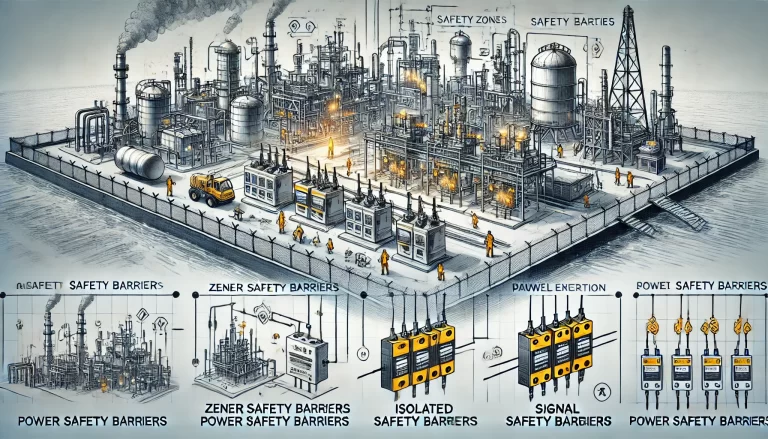
6. Installation Best Practices
Correct installation is critical for the safety barrier to perform effectively. Improper installation can lead to signal degradation, increased risk of explosion, or failure of the safety system. Follow these installation best practices:
- Grounding: Grounding is essential for safety and noise reduction. The safety barrier must be properly grounded, following the manufacturer’s recommendations and applicable standards. A common requirement is for the ground resistance to be less than 4 ohms.
- Wiring: Use appropriately rated and shielded cables to minimize the risk of signal interference. Carefully follow the manufacturer’s wiring diagrams, ensuring correct polarity for both input and output connections.
- Testing and Commissioning: After installation, conduct thorough testing to ensure the system functions as expected. Check signal continuity, isolation integrity, and communication between the barrier and field devices.
- Routine Maintenance: Isolated safety barriers should be inspected regularly as part of a maintenance routine to detect wear and tear, signal degradation, or grounding issues. Periodic tests should be conducted to verify the barrier’s performance over time.
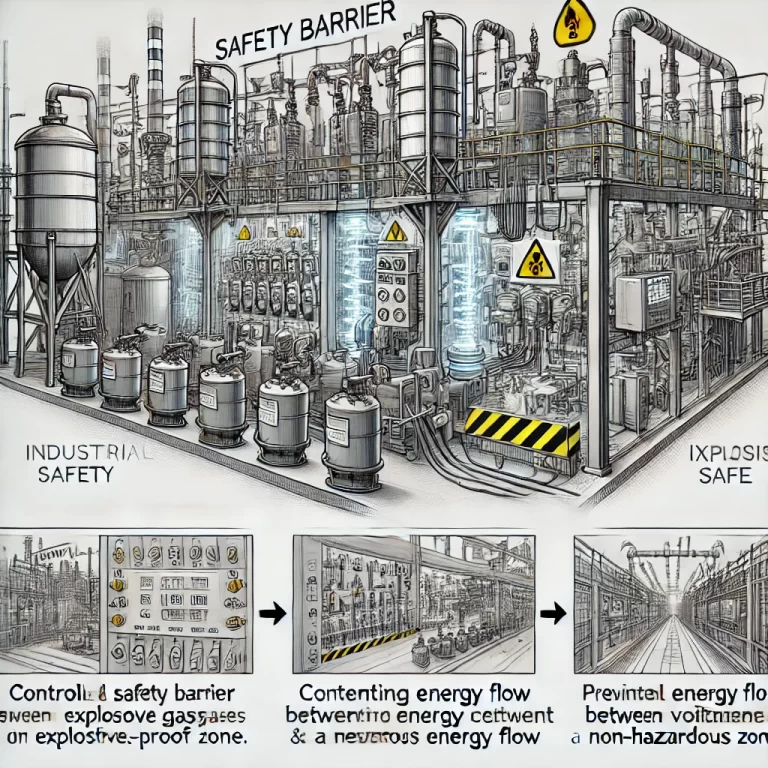
7. Testing and Maintenance
Finally, after the installation is complete, it is important to perform functional testing:
- Functional Tests: After installation, ensure that the safety barrier performs as expected under normal operating conditions. Simulate different operational scenarios to verify its correct functioning, ensuring that it transmits signals accurately while maintaining isolation.
- Routine Inspection: Establish a routine maintenance schedule, especially in highly critical safety applications. Over time, environmental factors like dust, temperature variations, and humidity may impact the performance of the barrier, so periodic testing and recalibration may be necessary.
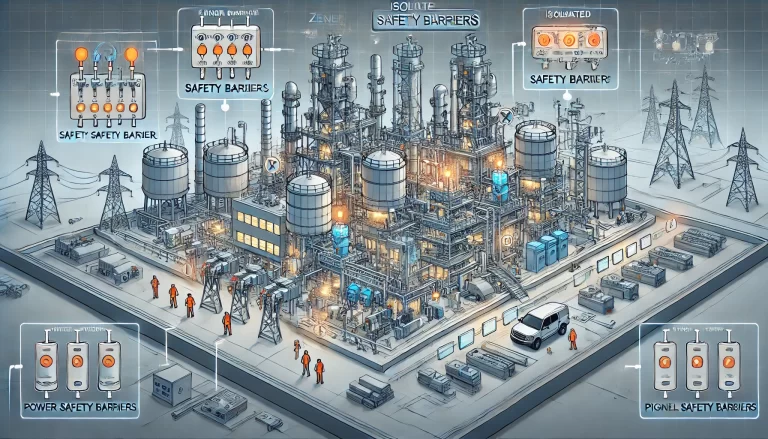
Conclusion
Selecting and installing an isolated safety barrier requires careful consideration of the environment, signal types, technical specifications, and safety requirements. By thoroughly evaluating these factors and adhering to best practices for installation and maintenance, you can ensure optimal safety and performance in hazardous environments. Properly installed safety barriers not only protect personnel and equipment but also maintain the integrity and reliability of the control and monitoring systems in the industrial setting.
